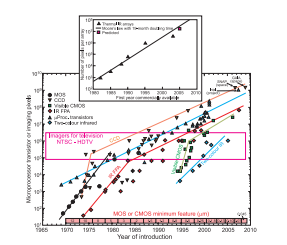Multicolour detector capabilities are highly desirable for advanced infrared (IR) systems with better target discrimination and identification. Systems that gather data in separate IR spectral bands can discriminate both absolute temperature and unique signatures of objects in the scene. By providing this new dimension of contrast, multiband detection also offers advanced colour processing algorithms to further improve sensitivity above that of single-colour devices. This is extremely important for identifying temperature differences between targets and and decoys. Multispectral IR focal plane arrays (FPAs) are highly beneficial for a variety of applications such as missile warning and guidance, precision strike, overhead surveillance, target detection, recognition, acquisition and tracking, thermal imaging, navigational aids and night vision. They can also play many important roles in Earth and planetary remote sensing, astronomy.
Surveillance, target detection, and target tracking can be done using single-colour FPAs if the targets are easy to identify. However, when the target and/or background are uncertain, or may change during engagement, single-colour design involves compromises that can degrade overall capability. It is well established that for a reduction of clutter and enhancement of desired features/contrast, one will require the use of multispectral focal plane arrays. In such cases, multicolour detection can greatly improve overall performance.
Currently, multispectral systems rely on cumbersome imaging techniques that either disperse the optical signal across multiple IR FPAs or use a filter wheel to spectrally discriminate the image focused on a single FPA. These systems include beamsplitters, lenses, and bandpass filters in the optical path to focus the images onto separate FPAs responding to different IR bands. Also, complex alignment is required to map the multispectral image pixel for pixel. Consequently, these approaches are expensive in their size, complexity, and cooling requirements.
In the future, multispectral systems will include very large sensors feeding an enormous amount of data to the digital mission processing subsystem. FPAs with the number of pixel above million are now available. As these imaging arrays grow in detector number for higher resolution, so will the computing requirements for the embedded digital image processing system. One approach to solve this processing bottleneck problem could be to incorporate a certain amount of pixel-level processing with the detector pixel, similar to the technique implemented in biological sensor information processing systems. By now, several scientific groups in the World have turned to the biological retina for answers as to how to improve man made sensors.
In this paper, we will review the state-of-the-art of two new multicolour detector technologies, type II InAs/ GaInSb strain layer superlattices (SLSs) and quantum dot IR photodetectors (QDIPs). At the beginning we outline the historical evolution of IR detector technology showing why certain device designs and architecture have emerged as successful in development of multicolour detectors. Next, discussions are focused on recently developed new material systems for multicolour detection. Discussions is focused on most recently on-going detector technology efforts in fabrication both photodetectors and focal plane arrays (FPAs).

Fig1
Hybrid FPA detectors and multiplexers are also fabricated using loophole interconnection . In this case, the detector and the multiplexer chips are glued together to form a single chip before detector fabrication. The photovoltaic detector is formed by ion implantation, and loopholes are drilled by ion milling. The loophole interconnection technology offers more stable mechanical and thermal features than flip-chip hybrid architecture.
The detector array usually illuminated from the backside (with photons passing through the transparent detector array substrate). In HgCdTe hybrid FPAs, photovoltaic detectors are usually formed on thin HgCdTe epitaxial layers on transparent CdZnTe substrates. For HgCdTe flip-chip hybrid technology, the maximum chip size is on the order of 20 mm square. To overcome this problem, PACE (producible alternative to CdTe for epitaxy) technology is being developed with sapphire or silicon as the substrate of HgCdTe detectors. When using opaque materials, substrates must be thinned to below 10 µm to obtain sufficient quantum efficiencies and reduce crosstalk.
Intermediary systems in use are also fabricated with multiplexed scanned photodetector linear arrays and with, as a rule, time delay and integration (TDI) functions. Typical examples of these systems are HgCdTe multilinear 288 x 4 arrays, fabricated by Sofradir for both 3- to 5-µm and 8- to 10.5-µm bands with signal processing in the focal plane.
上一篇: 第三代红外光子探测器的竞争技术
下一篇: 紫外光子晶体激光器